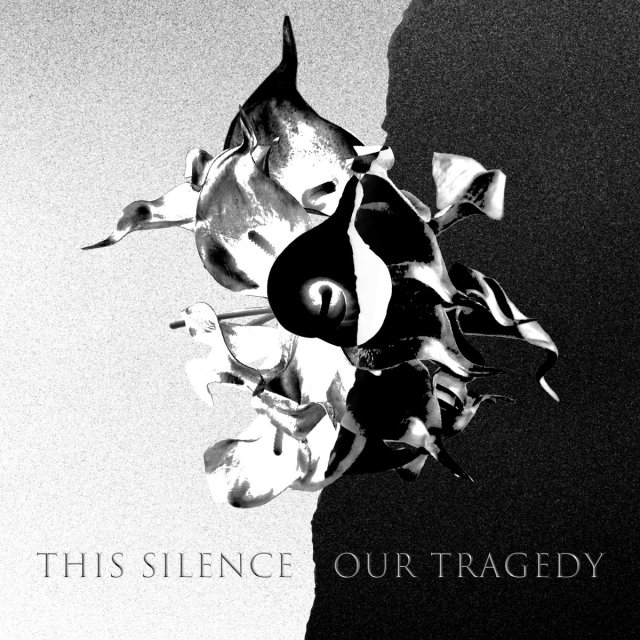[…continued from last post]
The next song on the album was the one I’d heard the seven inch edit of earlier. The album version of “Sister Europe” had another minute and a quarter to sprawl luxuriantly. The hypnotic sax by Duncan Kilburn spread like a mist over the slowly churning, heavily treated guitars. The slow-mo motorik beat of Vince Ely kept the song lurching inexorably forward.
The US version had one of two Martin Hannett-produced tracks sequenced next. “Susan’s Strange” would later become the B-side to the early version of “Mr. Jones;” released in advance of their 1981 “Talk Talk Talk” album. Hannett seemed to give the number a Phil Spector aimed rhythmic underpinning with the drums and tambourines awash in reverb. The most distinctive think about the recording, as opposed to the rest of the album as produced by either Steve Lillywhite or Howard Thompson, Ian Taylor and the band, was that vocalist Richard Butler sounded as if he had been miked from across a large room and called upon to project his way into the mike element. The effect served to fill the song with distance that undercut the attractive, circular construction of the verse structure.
While cuts like “Sister Europe” or the intro of “India” were slow and methodically paced, the bulk of the album still had punk energy channeled into its Post-Punk structure. “Fall” was a fast paced, insistent number with rhythmically vamping sax abetted by the unflinching beat of Ely giving vocalist Butler a rock-solid structure upon which to erect his breathlessly recited lyrics. John Ashton’s flanged solo in the middle eight was deliciously nagging and insistent.
“Soap Commercial” appeared here first, as the other Martin Hannett number would not surface in the UK until it was a bonus track on the “Pretty In Pink” UK 12″ single. It set a mid-tempo pace to begin the second side of the album. The next song, “Imitation Of Christ” was the one song here that seemed like an outlier pointing the way forward to the more sophisticated sound of the band’s second album, “Talk Talk Talk.” Right from the complex intro it sounded apart from the more blunt and direct attack of much of the album.
“Pulse” sported the most insistent motorik beat to be found here, but I wonder if the band were not more influenced by the Go-Gos early recording of “We Got the Beat” more than Neu! Again, Butler’s endlessly cascading lyrics burn into the brain like some sort of hypno-rap. The pace ebbed slightly for “Wedding Song” but the intensity of delivery remained high. The beat on this track was more complex than motorik, but no less intense. Once again, Butler had a methodical recitation that matched the delivery of the syllables that he was reciting to the meter of the music for an almost trance-inducing effect. A gambit he used frequently on the album.
Then the album ended with a bang. The lyrics alone to “Flowers” could cock an eyebrow, and once again, their delivery was matched by a relentless music bed that kept the beat brutally simple without wavering. As usual, Kilburn’s sax added the “jazz” to the mix. This was a dark, occasionally murky album; one that dared those interested to see if they could keep up. It was one that picked up the Post-Punk impetus from PiL and moved it two steps closer to something that approached pop music. And if it was pop, it was an uncompromising vision of pop that didn’t seek refuge in comfortable norms. Not with lyrics like “we cut his eyes with razor blades, and out of him comes foul white light.”
One got got the impression that Butler certainly had books full of poetry from his University days kept in check for exactly the time where he made his move in rock music. While he decried much as “stupid” and “useless,” the clichés here were at least of his own construction. Buter’s arid croak remained one of the most impressively unmusical voices I’d ever heard in rock music; and that’s saying a lot!
The other main partner in crime here along with the frontman and his lyrics/delivery was I daresay the amateurish sax of Duncan Kilburn. No one would mistake his competent playing for anything close to David Sanborn, and thank goodness for that! His playing had gotten nods in press I’d read at the time to far too obvious comparisons like Roxy Music’s Andy MacKay, but to these ears, the biggest sax influence is the elephant in the room: Mr. David Bowie. The enthusiastic adequacy of Kilburn’s playing compares very strongly to all of the honking that Bowie had done over the years. Not forgetting his finest sax work having been just a few years earlier on the “Heroes” album; particularly the more abstract playing on side two. Kilburn wisely didn’t go there, but what he did contribute to these ears sounds like nothing less than the sax fills from the “Tin Machine” album.
This album made me a big fan of The Psychedelic Furs. So much so that the week that their sophomore classic “Talk Talk Talk” came out, it was boom! Right in the Record Cell immediately. That time Steve Lillywhite, who produced half of this album, did the full honors and the band expanded their horizons admirable as they began their sashay towards commercial respectability. That they wouldn’t fall off the cliff until their fifth album, speaks well for them, but by that point, all of their peers were busy making like lemmings themselves.
– 30 –










![Chris Cross: 1952-2024 [part 2]](https://i0.wp.com/postpunkmonk.com/wp-content/uploads/2024/04/ultravox-cross.jpg?resize=200%2C200&ssl=1)


You’ve hit the nail on the head with the Bowie comparison, Monk! As I’ve been listening to Bowie’s early 70s stuff just lately (for my blog walkthrough of his career: https://thechasbah.wordpress.com/category/bowie/) I’ve started hearing his sax work more and more, and … well … to paraphrase Monty Python, “he got better” but never much more than functional. Still, this is what makes Kilburn’s contribution part of the lingering punk spirit of the album.
LikeLike
chasinvictoria – If anyone had told me that Bowie himself had played sax on the album, I would have believed it. Actually, that would have been a fantastic hype! As for Kilburn, he left the band following the second album and it looks like he took a Holiday In Cambodia!
LikeLike
Speaking of the Thin White Duke, wasn’t he at one point interested in producing either the second or the third Furs album? I seem to remember a late 1980 Creem article on the band in which Richard Butler discussed the possibility. What a collaboration that would have been!
I saw the Furs live in 2004, and they were superb. They concluded their set with “India.” One by one, the musicians left the stage until only John Ashton remained. He struck a chord on his guitar, set it down, and walked offstage as the sound continued for several minutes, until at last a roadie appeared to turn it off. Those final moments were one of the most intensely ritualistic musical experiences I’ve ever had.
Your blog is a constant source of delight for me!
Cordially,
James Pagan
LikeLike
James Pagan – Wow! That closer to the 2004 show sounds perfect! I’d have probably burst into flames had that happened when I saw them in 2011, but that was the “Talk Talk Talk” tour, and alas, the second set contained “Sister Europe,” but not “India.” As for Bowie/Furs crossover. Not too shocking. I always thought that Butler was coming from a punk Bowie perspective, though he never emulated his Dukeness, overtly. Bowie never lost much of his cachet with the Punk generation. Even Lydon rated him… not to mention the Bromley Contingent .
LikeLike
“That they wouldn’t fall off the cliff until their fifth album, speaks well for them, but by that point, all of their peers were busy making like lemmings themselves.”
You said a mouthful there. I point my finger directly at the Pretty in Pink soundtrack album – not so coincidentally invoking a P-Furs tune. A recipe for post-punk disaster after Simple Minds’ sell-out the previous year, the PiP LP marks the exact moment that OMD, Echo and the Bunnymen, and New Order simultaneously jumped the shark, followed closely by the Furs (somehow having one of their classic songs on that album infected them to the point where they rode the success from Midnight to Midnight… and then woke up with a hangover).
LikeLike
JT – A mouthful? If it weren’t such a depressing topic, it’d be a book… or at least another of the epic threads I show no fear of starting on PPM. Until then, there’s the “Mid-80s Malaise” tag to be investigated. Yeah, the PiP OST was almost the epicenter for our generation of bands losing their relevance. Bowie, H17, and Ultravox all would have fit on there as well! And Ultravox sucked without even selling out in America!!
LikeLike
Wow, this article is a disaster. Did no one check facts? The Furs did not write “Femme Fatale”, they did not break up in 1982, they do not have an album called Pretty in Pink, and Angkor Wat is not one of the Seven Wonders of the World. Plus: typos aplenty. Who knows if the political background stuff is accurate? Joanna Walters needs to get on the ball.
LikeLike
JT – Oh, I know! Hard to believe this passed muster in The Guardian! And PS – all of your posts are getting caught in the spam filter. Why, I cannot say. So be patient. They will get cleared once I check it. I’ll have to step up my oversight there.
LikeLike